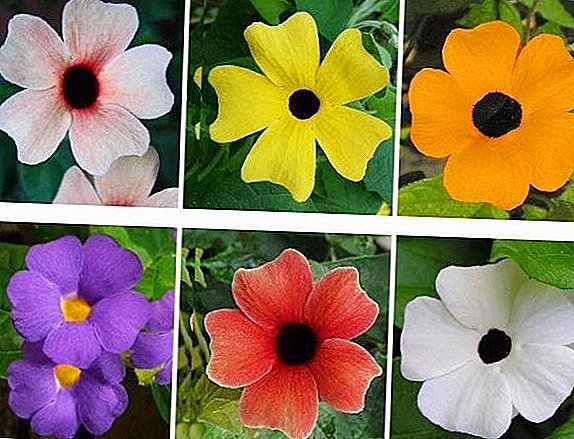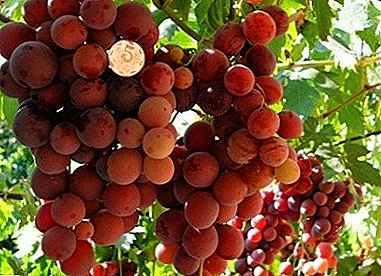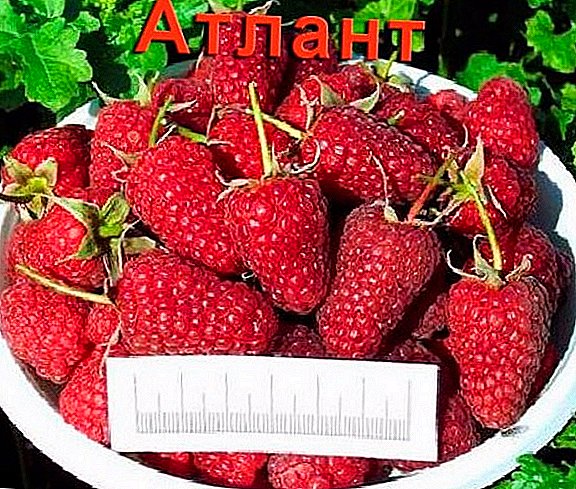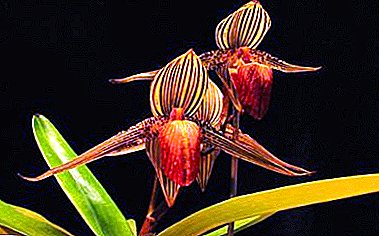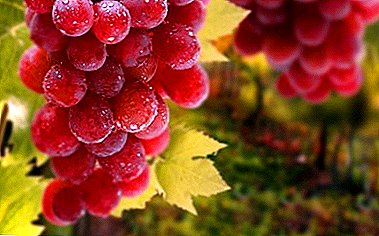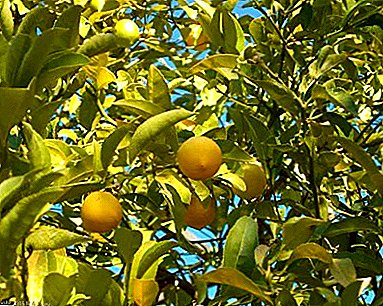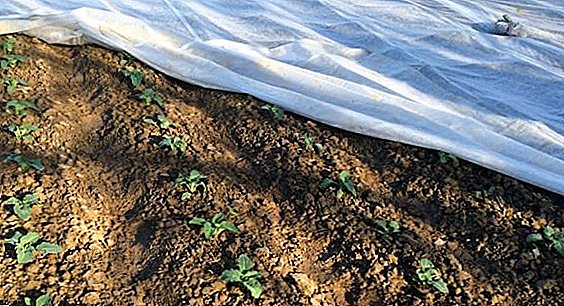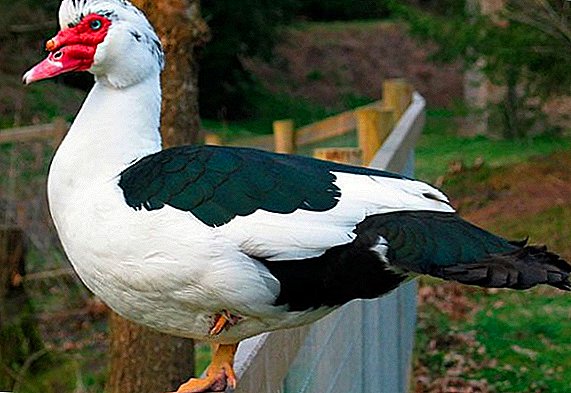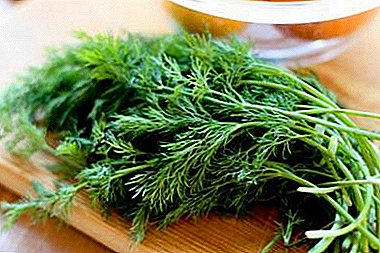
Once, dill was considered an ornamental plant and woven into wreaths and bouquets. The spicy properties of herbs were barely discovered, she was used in cooking - she discouraged unpleasant odors, stimulated the appetite, gave the food a savory taste.
Today, dill is valued not only for its taste, but also for its pharmaceutical - its chemical composition is richer than that of most vegetables and fruits. The article below provides detailed information on the chemical composition of dill, both fresh and frozen, boiled and dried.
What contains greens: the chemical composition of fresh plants
 Consider the usefulness of dill, what vitamins it contains or other valuable elements for the human body. Soups, salads and main dishes with dill are not so much seasoned as they are enriched. Tart culture treats many diseases:
Consider the usefulness of dill, what vitamins it contains or other valuable elements for the human body. Soups, salads and main dishes with dill are not so much seasoned as they are enriched. Tart culture treats many diseases:
- jumping pressure;
- obstruction of blood vessels;
- heart muscle problems;
- intestinal colic and bloating;
- sluggish appetite;
- cough;
- constipation;
- swelling;
- weak lactation.
And all this is due to the chemical composition of dill. In its openwork leaves contains almost a complete list of vitamins, micro-and macronutrients, as well as amino acids.
What vitamins does it contain?
Dill contains a lot of carotene, vitamins of group B, P and PP, ascorbic acid and biological antioxidant E. A similar set of useful substances is characteristic of black currant and lemon, which are known for healing properties.
- Vitamin A involved in complex metabolic processes:
- forms the mechanism of vision;
- responsible for the growth of the body;
- regenerates cells.
In 100 g of dill 0.380 mg of carotene is concentrated, which is one fourth of the daily norm.
- Thiamine (Vitamin B1) required nervous and muscular systems. It does not accumulate in the body and is needed in the daily diet constantly, otherwise the functions of muscles and nerve cells will be disturbed. 100 g bunch of spices includes 0.58 mg of the substance - half the daily value.
- Vitamin B2 or riboflavinwhich is a lot in dill, indispensable for the body:
- he supports vision;
- protects the skin from aging;
- stimulates brain activity;
- whets the appetite;
- tones up;
- prevents age transformations.
Approximately 0.3 mg of riboflavin is contained in 100 g of dill.
- Without vitamin E normal digestion, development of muscles and nerve cells is impossible. Its deficiency affects the health of the skin and heart. In healthy people, vitamin E accumulates in adipose tissue and is released on demand, but it also needs to be replenished from time to time. To do this, include in the diet products with a biological antioxidant and herbs, in particular dill.
- Vitamin C not produced by the body, so it is systematically replenished. Without it, collagen is not synthesized, vascular walls become thinner, resistance to viruses and bacteria decreases. 100 g of dill - 85 mg of vitamin C - is 15 mg more than the daily requirement.
- Niacin - Vitamin PP or Nicotinic Acid forms hemoglobin, accelerates metabolism, stabilizes nervous activity. Dill herbs retain 1.57 mg per 100 g.
- Rutin and Citrine (Vitamin P) lead redox processes.
- Flavonoids - quercetin, kaempferol and isorhamnetin - absorb ultraviolet light, strengthen blood vessels.
What are macronutrients?
 Dill greens are full of macronutrients. Per 100 g of seasoning accounts for several mg:
Dill greens are full of macronutrients. Per 100 g of seasoning accounts for several mg:
- 738 potassium;
- 61 sodium;
- 208 calcium;
- 55 mg;
- 66 phosphorus.
They are responsible for the vital activity of the organism, and function according to the biological role. Due to their content in fresh dill, seasoning is good for the whole body.
Trace elements
Iron and zinc, copper and manganese are the main trace elements of dill greens. In 100 g of fragrant grass, they are enough to partially cover the daily need for these elements.
Amino Acids
In every 100 g of dill several g of essential amino acids are concentrated:
- 0.014 tryptophan;
- 0.068 threonine;
- 0.195 isoleucine;
- 0.159 leucine;
- 0,246 lysine;
- 0.011 methionine;
- 0.065 phenylalanine;
- 0.154 valine;
- 0.142 arginine;
- 0,071 histidine.
There are slightly less substitutable amino acids in dill:
- 0,227 alanine;
- 0.142 arginine;
- 0.343 aspartic acid;
- 0.169 glycine;
- 0,248 proline;
- 0.096 tyrosine;
- 0.017 cystine;
- 0.158 serine;
- 0,290 glutamic acid.
The energy value
How many calories are contained in fresh dill, as well as proteins, fats and carbohydrates? Like any herb, green dill has a low calorie content - only 43 kcal per 100 grams of product, for nutritional value or for BJU of fresh dill: for protein - 3.5 g, for fats - 1.1 g, and for carbohydrates - 7 , 0
Calorie dill does not tend to zero, according to some sources. But to digest the greens the body spends a lot more energy than it gets with it.
Cooked
 Heat treatment changes the structural and mechanical properties of greens and chemical composition. Cell walls of plants are composed of substances that are not digested in the human stomach - it is fiber, as well as pectic substances.
Heat treatment changes the structural and mechanical properties of greens and chemical composition. Cell walls of plants are composed of substances that are not digested in the human stomach - it is fiber, as well as pectic substances.
When boiling tissue and cell walls are destroyed, lose their elasticity, the connection between the cells is broken - the culture becomes soft and loose.
During heat treatment, polysaccharides and structural proteins partially dissolve, and protopectin is cleaved. The concentration of vitamins is reduced by 23-60% - depending on the cooking time and the degree of heating.
For example, the content of hydroxyproline in raw dill is 20.3 mg per 100 g, and in boiled it is only 12.3 mg.
Cooked dill is not as healthy as fresh, but is digested and absorbed better. And the caloric content of greens is reduced due to swelling in water.
Frozen
Freezing is a gentle way of preparing dill for future use. Subzero temperatures practically do not violate the chemical composition of greens, and retains almost all the useful substances. Changes undergoes only the caloric content of the culture - it becomes even lower than the original.
Dried
Consider what happens when the grass is dried, whether useful substances will remain, how many calories per 100 g of product will be. Drying of greens also preserves the chemical composition of spices, but only if carried out according to the rules., and without strong heating. Useful substances and the aroma of dried dill remain, however, the calorie content of the greenery increases due to the evaporation of water - it is 78 kcal per 100 grams of culture.
Does the chemical composition of different varieties of plants?
They differ in external signs, aroma shades, conditions of cultivation, terms of germination and aging. But the chemical composition of the varieties of dill is almost unchanged - any of the varieties of spices useful.
The exception is fennel - a green culture, which is often confused with dill. What is the difference between plants:
- Fennel above dill.
- In cooking, its fruits are used more often than the leaves.
- The seed is longer than that of dill and easily split.
- The aroma of fennel is thinner and sweeter.
- Pharmaceutical properties of culture are more pronounced.
Of course, tastes are not disputed, but dill is indispensable in cooking. No other spicy herb has such taste and aroma, does not contain as many beneficial compounds. Yes, and you can use it in any way - chop up in soup and salad, eat meat dishes and even brew them in tea. The main thing is to comply with the measure.


